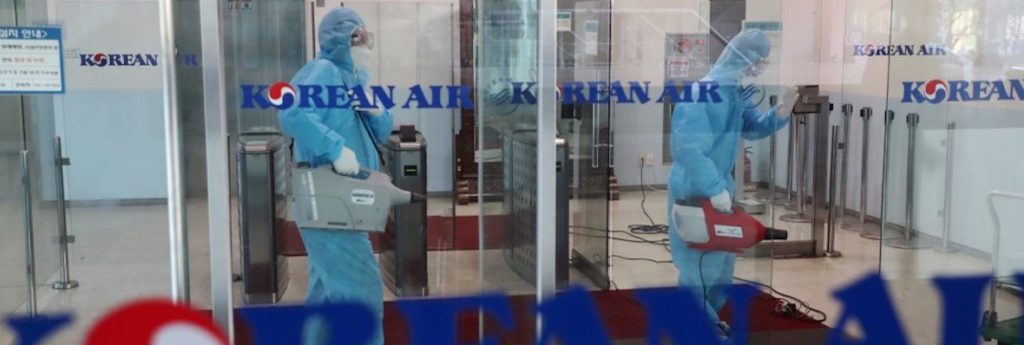Officials scrambled Tuesday to halt the spread of the burgeoning new virus, from northern Italy where troops were dispatched to enforce quarantines and schools were shuttered, to South Korea, where some neighbourhoods in a city of 2.5 million were brought to a near standstill.
New clusters of the illness popped up far from its apparent point of origin in China, fuelling apprehension in world financial markets and political institutions. The spread fueled an increased sense of urgency among officials in some of the wealthiest nations in Europe and Asia, as well as in countries like Iran, with far fewer resources to stem the disease. But many remained uncertain about how best to contain it.
“It’s a matter of speed and time: We must create a clear turning point within this week,” said President Moon Jae-in of South Korea, where the caseload grew by 144, with a total of 977 people sickened.
Cases of people who could have infected many others spurred fears.
Korean Air said one of its crew members tested positive, but the airline didn’t disclose the flights the employee had worked on. On a US military base in Daegu, the centre of infections in South Korea, officials said a 61-year-old widow of a US service member had also been infected. It was the first known case among people related to the thousands of US troops stationed in the country.
In the tiny Persian Gulf nation of Bahrain, one of those infected was a school bus driver who had transported students as recently as Sunday.
Also testing positive was the head of Iran’s virus task force, who just a day earlier gave a news conference in Tehran in which he tried to minimize the danger posed by the outbreak.
In Italy’s north, where more than 200 people are ill, a dozen towns were sealed off and police wearing face masks patrolled.
Two neighbours of Italy — Croatia and Austria — reported their first cases of the virus. And, an Italian doctor staying at a hotel in the Canary Islands tested positive for the virus, prompting the quarantine of hundreds of guests.
Croatia, Hungary and Ireland advised against traveling to Italy’s affected area, one of a number of government moves seeking to limit further exposure. Bahrain suspended flights to Dubai while the United States’ Centers for Disease Control and Prevention issued its highest travel alert on South Korea, advising citizens to avoid nonessential trips. Japan also urged citizens to avoid unessential travel to South Korea’s hardest-hit areas.
A culture of long days at the office in Japan came to terms with the outbreak, with the government urging employers to allow workers to telecommute and have more flexible hours, simple moves Japanese Prime Minister Shinzo Abe expressed hope could help control the spread.
“We are at an extremely important time in ending the spread of infection at an early stage,” Abe said at a meeting of a task force on the outbreak.
Even in places where no cases have sprouted up, leaders kept a wary eye, such as in Denmark, where two former military barracks were being prepared as quarantine centres. Still, uncertainty remained about how to effectively limit the epidemic.
Italy had taken Europe’s most stringent preventative measures against COVID-19, the disease caused by the virus, and yet became home to the biggest outbreak outside Asia. Experts in Japan, with one of the world’s most sophisticated health systems,
acknowledged the country’s handling of the virus-stricken Diamond Princess cruise ship was flawed and could have allowed the problem to magnify.
In comments reflecting both defiance and dubiousness over what measures work, French health minister Olivier Veran said the country would not shut its border or call off mass gatherings.
“We don’t close borders because we would not be able to, we don’t do it because it would be meaningless,” he said on French radio.
“Should we ban gatherings? Should we stop the Fashion Week? Should we suspend matches? Should we close universities? The answer is no.”

